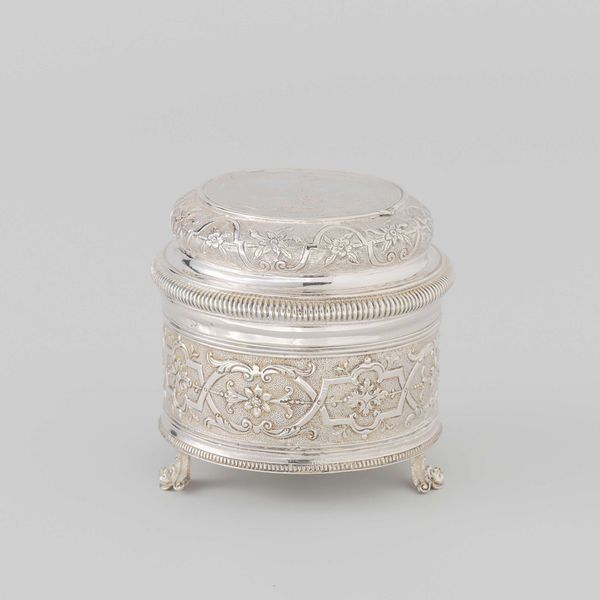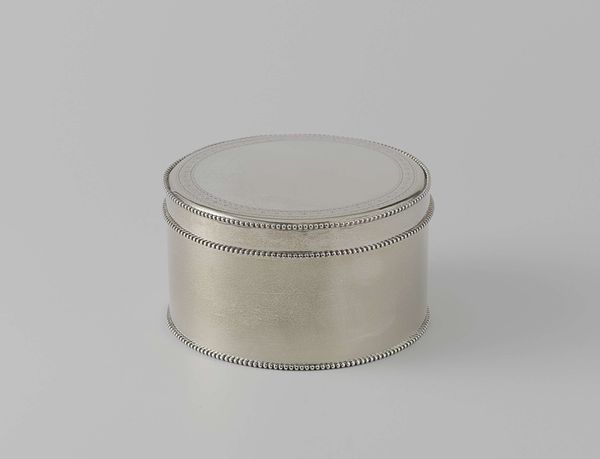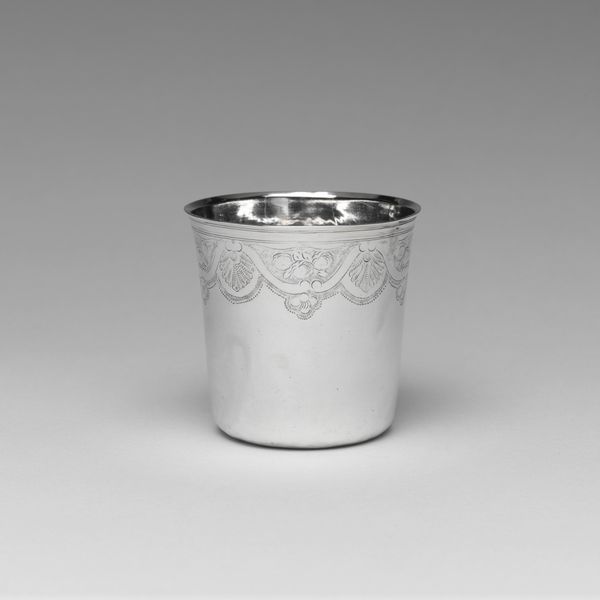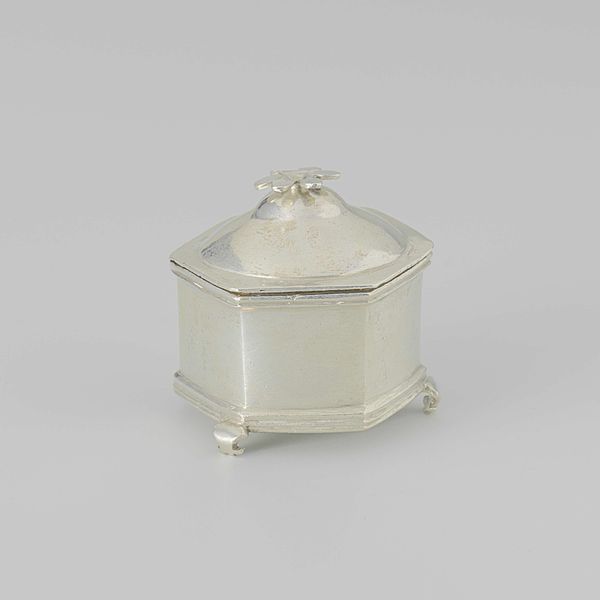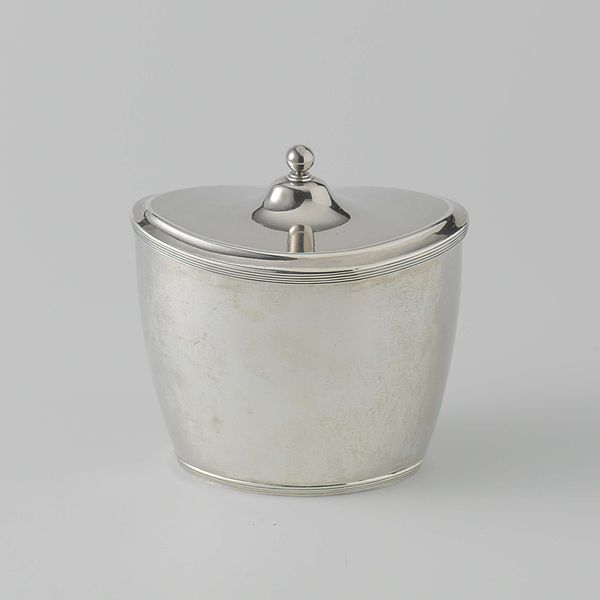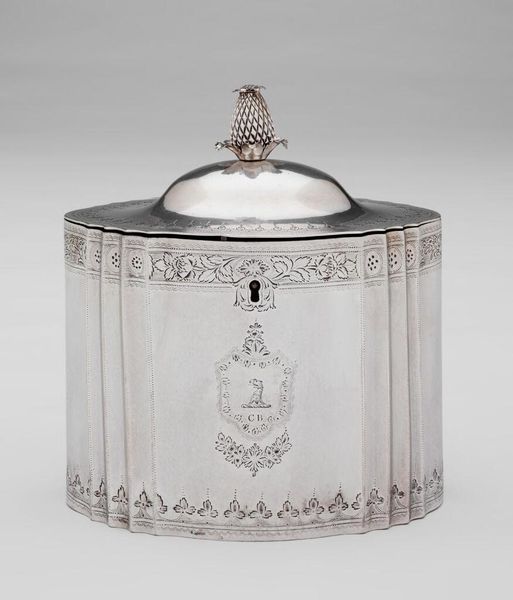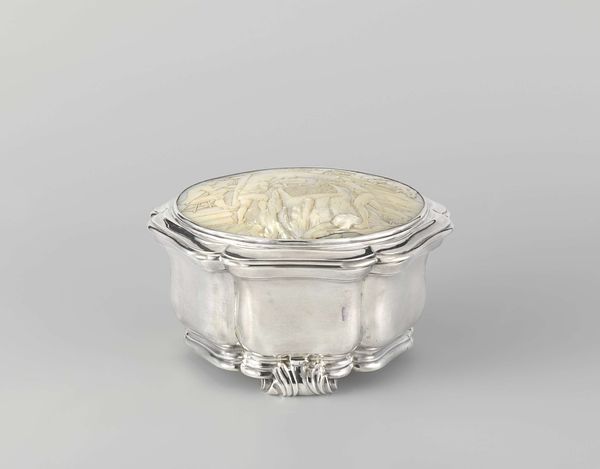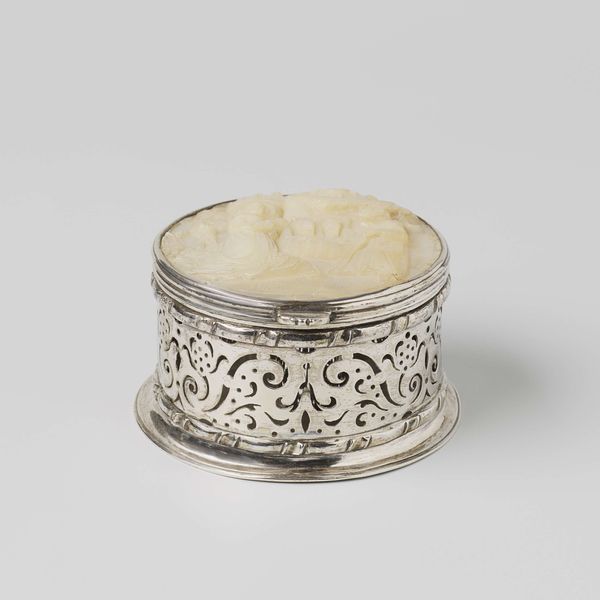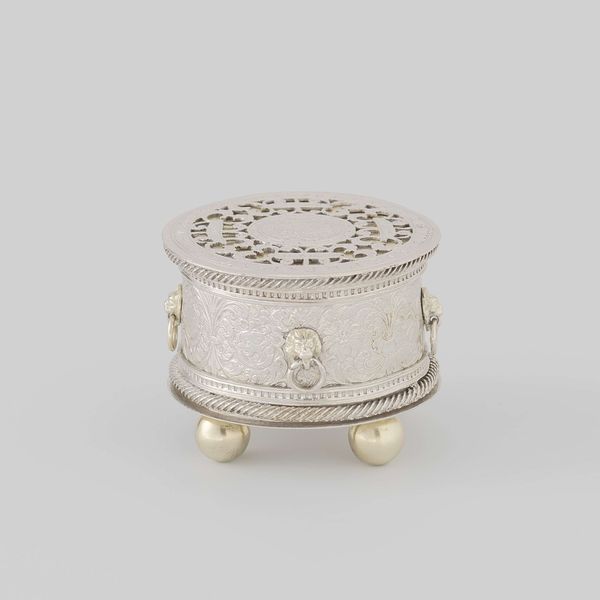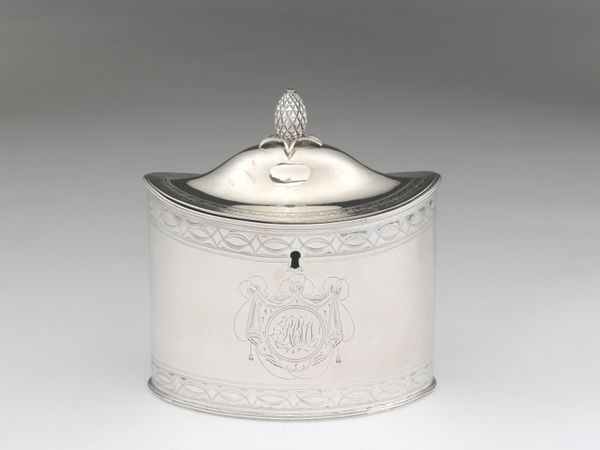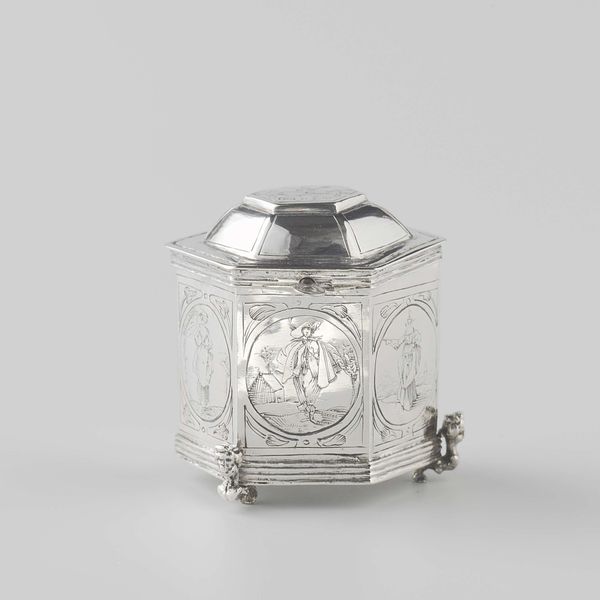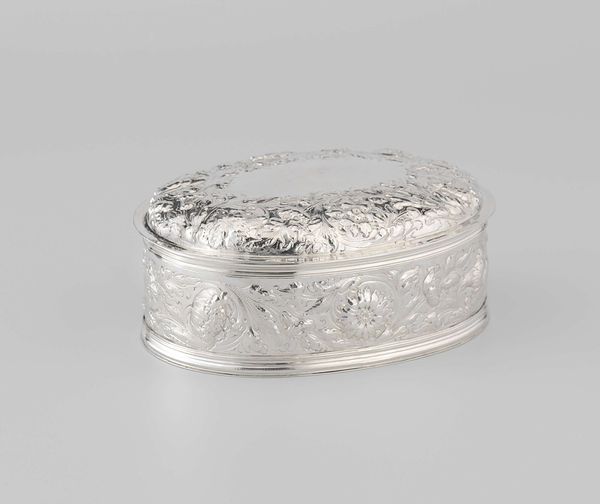
Dimensions: height 8.6 cm, width 13.0 cm, depth 13.3 cm, weight 454 gr
Copyright: Rijks Museum: Open Domain
Editor: Here we have "Two boxes," a silver and metal carving created by Johannis Logerath in 1788. It's a beautiful, gleaming thing. It makes me think of something a noble might use to keep their trinkets safe. The geometric form and delicate Rococo details feel so elegant. What details stand out to you? Curator: Oh, trinkets, yes! Or perhaps a gentleman's snuffbox, what do you think? It’s curious that the title suggests ‘two boxes’ when we clearly see one, unless, perhaps, the artist implies a hidden compartment or one nested within the other? The silver sings, doesn't it? Reflecting light, almost whispering secrets from centuries past. Can't you almost feel the cold metal in your hands? I imagine the artist carefully choosing the perfect tools for each cut, each line… each tiny, perfect bead. Do you get a sense of stillness? Of profound peace emanating from such an everyday item? Editor: Absolutely, there is something very serene about it, and you are right, the title adds a touch of mystery. Considering it's from 1788, it feels remarkably simple. Not overly adorned, you know? Curator: Simplicity as a rebellion against the over-the-top Baroque perhaps? Or a quiet moment amidst revolution, where a tiny, treasured object could contain an entire world of hope. What would you keep inside? A lock of hair? A faded love letter? Or simply, the echo of a smile... Editor: It is nice to imagine, what its first owner must have felt like holding it... Well, I’ll definitely be looking at decorative art with fresh eyes now, imagining its hidden stories. Curator: Me too, what precious burdens would it bear now, were it entrusted to us? Food for thought.
Comments
rijksmuseum about 2 years ago
⋮
Plain silver boxes were produced in large numbers in Amsterdam. The round box was meant to hold rusks, and the square one rolled wafers, so-called ‘oublies’. An inscription on the bottom of each box mentions that the two Stinsta sisters gave them in 1788 to their aunt and uncle, who had been their guardians for some years.
Join the conversation
Join millions of artists and users on Artera today and experience the ultimate creative platform.
